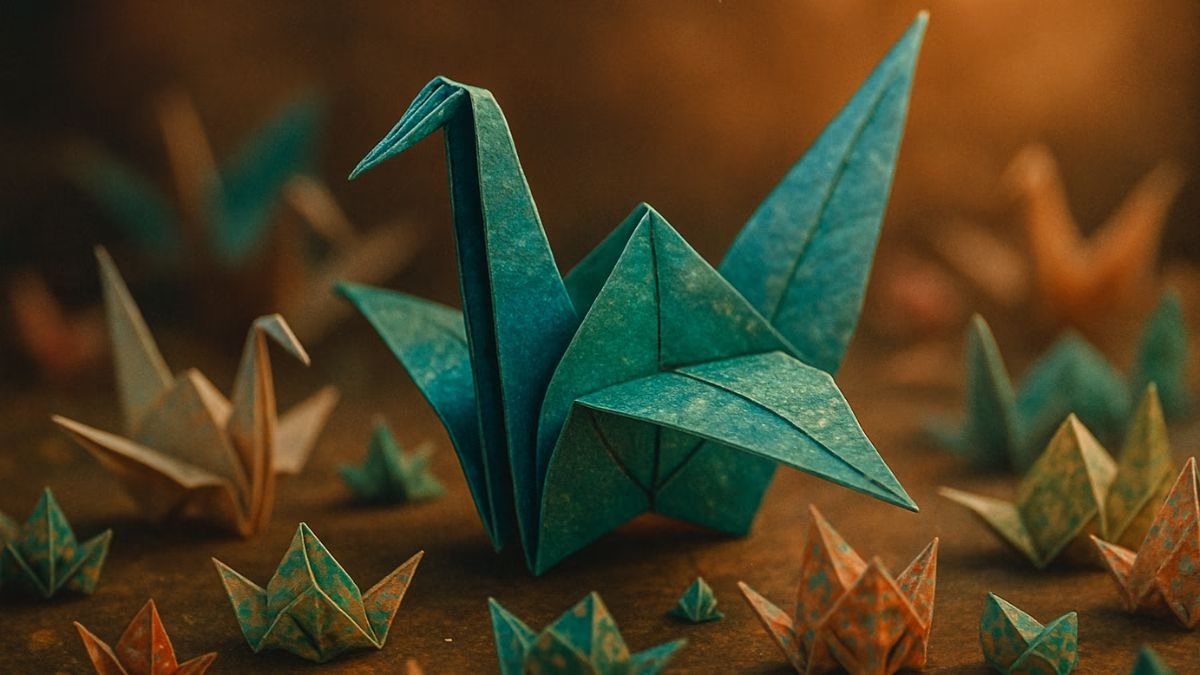Introduction
Have you ever looked at a simple, flat piece of paper and imagined the endless possibilities hidden within its corners and edges? That’s the magic of origami! It’s an art form, a meditative practice, and even a branch of mathematics, all wrapped up in one. It’s the journey of transforming a humble square into something beautiful and complex, using nothing but your hands and your imagination.
This quiz is designed to be your guide on that journey. Forget boring tests; this is an interactive exploration of the rich world of paper folding. We’re going to travel back in time to ancient Japan, meet the grandmaster who turned a craft into an art, and even peek into how origami is being used to design spacecraft.
By taking this quiz, you will:
- Discover the “Why”: Learn the fascinating history and cultural significance behind the folds.
- Learn the Language: Understand the basic terms and techniques that are the building blocks of every origami creation.
- Meet the Masters: Get to know the key figures who shaped the art of origami.
- Spark Your Creativity: Gain a new appreciation for the artistry and ingenuity behind paper folding, and maybe even feel inspired to start folding yourself!
So, whether you’re a complete beginner or you’ve already folded a crane or two, there’s something here for you. Are you ready to unfold the secrets? Let’s begin!
Learning Quiz
This is a learning quiz from English Plus Podcast, in which, you will be able to learn from your mistakes as much as you will learn from the answers you get right because we have added feedback for every single option in the quiz, and to help you choose the right answer if you’re not sure, there are also hints for every single option for every question. So, there’s learning all around this quiz, you can hardly call it quiz anymore! It’s a learning quiz from English Plus Podcast.
Quiz Takeaways | The Hidden World in a single Fold: What We’ve Learned
Welcome back, and well done on completing the quiz! You’ve just taken a journey through an art form that is so much more than it appears. We start with a simple square of paper, something we see every day, and with nothing but a series of folds, we create something new. It’s a little bit of everyday magic. But as you’ve just discovered, behind that magic is a rich history, a precise language, and even some cutting-edge science. Let’s take a moment to connect these ideas and appreciate the beautiful, complex world of origami.
First, let’s talk about the soul of origami—its history and meaning. As we learned, the word origami comes from the Japanese words for “fold” (oru) and “paper” (kami). Its origins as a refined art can be traced back to Japan’s Heian period, where paper was a luxury, and folding it was a ceremonial activity for the rich and powerful. Later, even the mighty samurai warriors exchanged folded good-luck tokens called noshi. But the deepest meaning of origami for the modern world is embodied in the story of Sadako Sasaki and the senbazuru. Her quest to fold one thousand cranes in a hope for health transformed the simple paper crane into a profound international symbol of peace and hope. This tells us that origami is not just about making pretty shapes; it’s an art form capable of carrying deep human emotion.
Next, let’s look at the grammar of origami. To an outsider, the diagrams can look like a secret code. But as you learned in the quiz, it’s actually a simple and elegant language. The alphabet of this language consists of two letters: the Valley Fold, which creates a V-shape, and the Mountain Fold, its opposite. Once you master these, you learn to make “words” with techniques like the Squash Fold (flattening a point) or the tricky Inside and Outside Reverse Folds (creating heads and beaks). These “words” are then combined to form “sentences,” which are the foundational starting points called bases. We met the most important ones: the Bird Base, which is the start of the iconic crane, and the Waterbomb Base, the foundation for countless geometric models. Once you understand this language, you can follow the instructions to create almost anything.
For centuries, origami was a traditional folk art with a limited number of models passed down through generations. The person who changed everything was the great Akira Yoshizawa. Think of him as the Shakespeare of origami. He took the simple language and elevated it into breathtaking poetry. As we discovered, he invented tens of thousands of new models, but his true genius lies in two innovations. First, the technique of wet-folding, where dampening the paper allowed him to create soft, realistic curves, turning folded paper into true sculpture. And second, he created and standardized the system of diagrams—the Yoshizawa-Randlett system—that we still use today. He created the universal language that allowed origami to be shared and to flourish across the entire world.
Yoshizawa’s work opened the floodgates of creativity, and today, origami has branched out into many amazing styles. We learned about Modular Origami, a style where you fold many identical units and then assemble them, like 3D puzzle pieces, into a larger geometric shape. We also drew the important distinction between pure origami and its cousin, Kirigami, which allows for cutting the paper. And we touched on mind-bendingly complex styles like Tessellations, where a single sheet of paper is folded into a repeating geometric pattern. This shows that the art is constantly evolving and expanding.
Perhaps the most surprising thing we learned is that this ancient art form has a place in the future. Origami is not just a hobby; it’s a science. The principles of efficient folding are being used by engineers at places like NASA. As we saw in the quiz, they use origami to design huge solar panels that can be folded into a tiny, compact shape to launch into space and then unfold reliably. The same principles are being used to design airbags that deploy perfectly, tiny medical stents that can be inserted into an artery and then expand, and even foldable robots.
From a simple good-luck charm used by a samurai to a solar panel powering a satellite, the journey of origami is incredible. It teaches us about art, history, patience, and even mathematics. It shows us that with a little creativity, a simple sheet of paper holds infinite possibilities. I hope this journey has sparked your curiosity. The next time you see a piece of paper, maybe you’ll see not just a square, but a world of potential waiting to be unfolded.










0 Comments